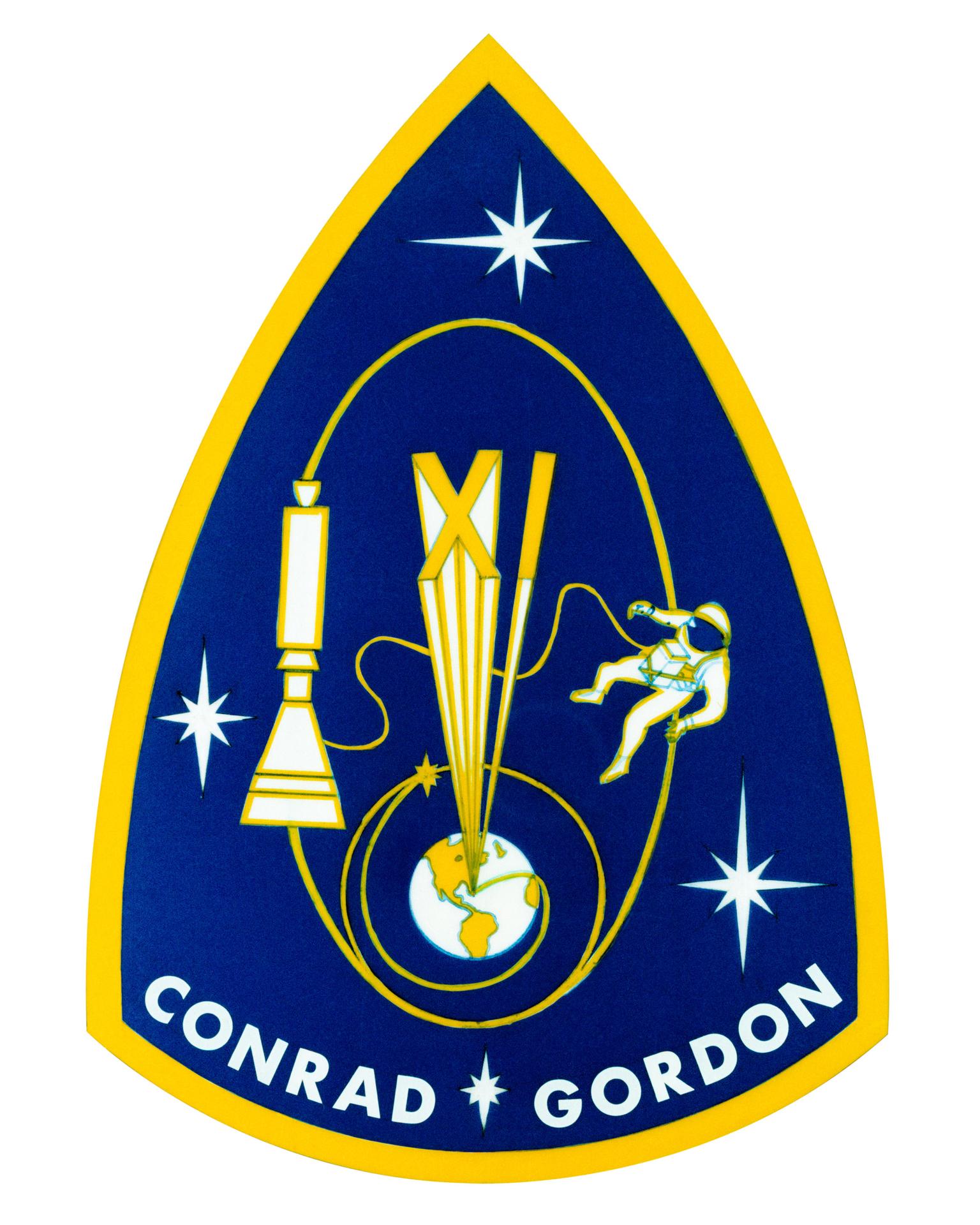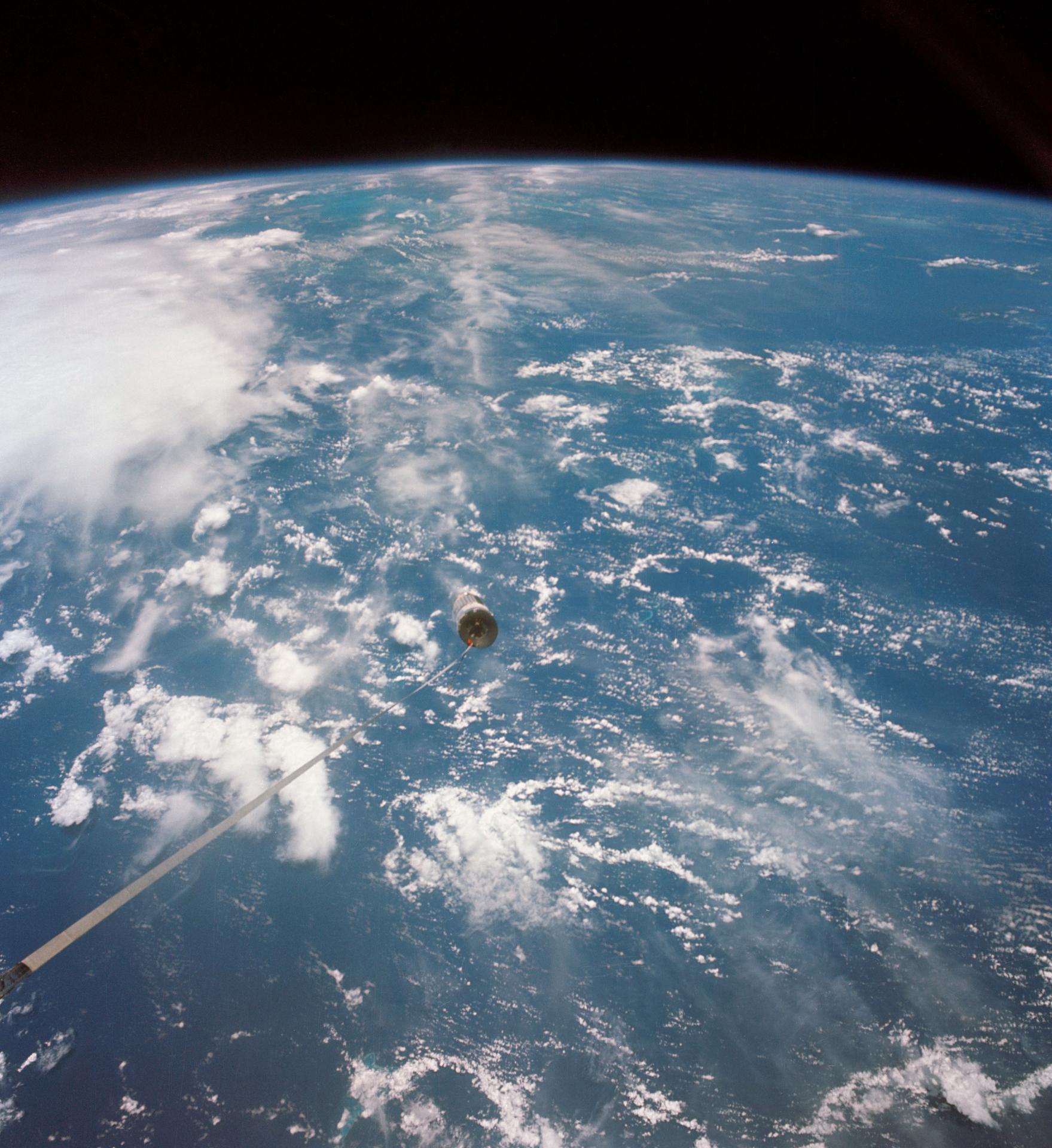
This week in rocket history is Gemini 11, a mission that set not one but two records that still stand today: highest altitude reached by a human in Earth orbit and shortest time between launch and docking.
The mission goals were to demonstrate fast docking, required by the Lunar Module on its ascent from the Moon, and gain more experience performing spacewalks. Secondary goals were to demonstrate artificial gravity and perform some onboard experiments and astronomy.
Gemini 11 launched on September 12, 1966, at 14:42 UTC. Its docking target, Gemini Agena Target Vehicle (GATV) 11 was launched ninety minutes earlier. Six minutes after launch, astronauts Richard Gordon and Pete Conrad were in orbit and quickly got ready to perform five rendezvous burns to meet up with the Agena. One hour and 25 minutes into the mission, they docked with the Agena. Once docked, each astronaut performed two docking demonstrations, before riding the Agena into a slightly higher orbit. This concluded the first day of the mission.
On the second day, September 13, astronaut Gordon performed the mission’s first spacewalk. He was supposed to attach a tether from the Agena onto the Gemini for a later artificial gravity demonstration and test out a new space power tool in the process. However, the exertion of moving the tether caused sweat to build up in his suit, and he was blinded in one eye. He was ordered back into the spacecraft without attempting the power tool demonstration. This concluded the second day of the mission.
The third day of the mission, September 14, was the most important.
The Agena fired its engine for 25 seconds, sending Gemini 11 into an orbit with a 1,374-kilometer apogee, setting the first record for the mission as this is the highest altitude a crewed mission has been in Earth orbit. After two revolutions in this extended orbit, the Agena fired again to lower Richard and Pete back into their prior orbit.
Now it was time for another EVA, again by Gordon. This time he didn’t leave the spacecraft, instead just standing up out of the hatch. He took photographs for two hours and then closed the hatch and repressurized the spacecraft.

Then it was time for the artificial gravity demonstration. Gemini undocked and backed away to the length of the tether, which was thirty meters. Astronaut Conrad initiated a slow rotation of the coupled spacecraft with the Gemini’s thrusters, keeping the tether taut.
Initially, the two spacecraft wobbled around, but after twenty minutes it was under control. This cycle of increasing rotation and oscillation followed by damping, or smoothing out of the wobble, was repeated several times until the combined spacecraft had a slight artificial gravity of 0.00015g measured on Gemini. The experiment was maintained for about three hours after which the Gemini undocked.
It demonstrated for the first time in space the problems of simulating gravity – nothing is held in place, so one or both of the things at the ends of a tether will wobble freely in a random direction. Also, the amount of artificial gravity they were able to produce was so small – just 0.015% of that on Earth – that it wasn’t useful.
At 08:22 UTC on September 15, Gemini 11 docked to the Agena for the final time. This final docking was completed manually after the rendezvous radar malfunctioned.
After 44 orbits around the Earth, Gemini 11 performed its deorbit burn. The reentry was another first: the first completely computer-controlled guided reentry of the U.S. space program. Splashdown was at 12:59 UTC on the 15th, bringing the mission to a close after just over 71 hours in space. All primary mission objectives were completed despite a few malfunctions and the mission even got a bonus docking due to extra propellant.
More Information
Gemini 11 (NASA)
Sept. 14, 1966 – Gemini XI Artificial Gravity Experiment (NASA)




 Join the Crew!
Join the Crew!
 Escape Velocity Space News
Escape Velocity Space News
0 Comments